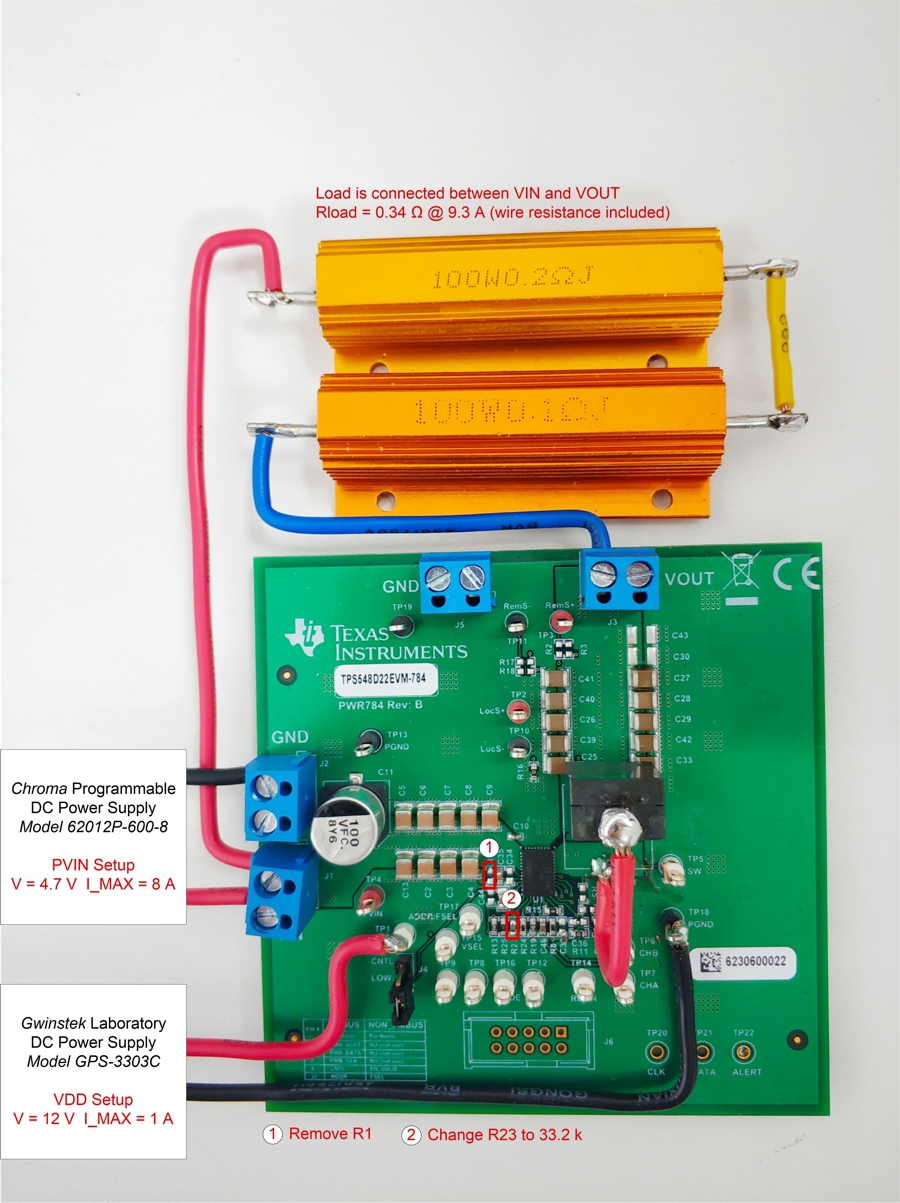SLUAA69 July 2020 – MONTH TPS548D22
6.1 Bench Test Configuration
Figure 6-1 shows the bench test configuration of TPS548D22 with sinking current application. The power supply used in this configuration was limited to 8-A current. Therefore this test is not able to validate the 30 A full load (Rload = 3.2 V/30 A = 0.107 ohm) condition. However, an approximate 9.3-A load (Rload = 3.2 V/0.34 ohm = 9.3 A) is sufficient to verify the feasibility of TPS548D22 with a current sink application. Note that the output voltage of the DC power supply is set at 4.7 V. This is higher than the 4.2-V input voltage due to resistive loss in the cabling.
 Figure 6-1 Bench Test Configuration of
TPS548D22 with Sinking Current Application
Figure 6-1 Bench Test Configuration of
TPS548D22 with Sinking Current Application